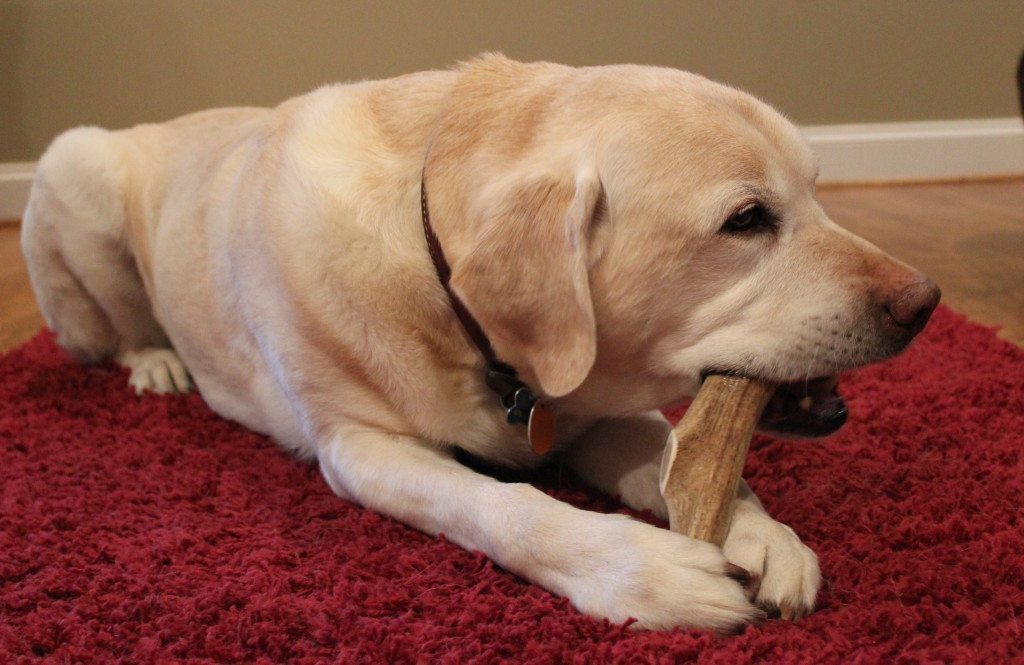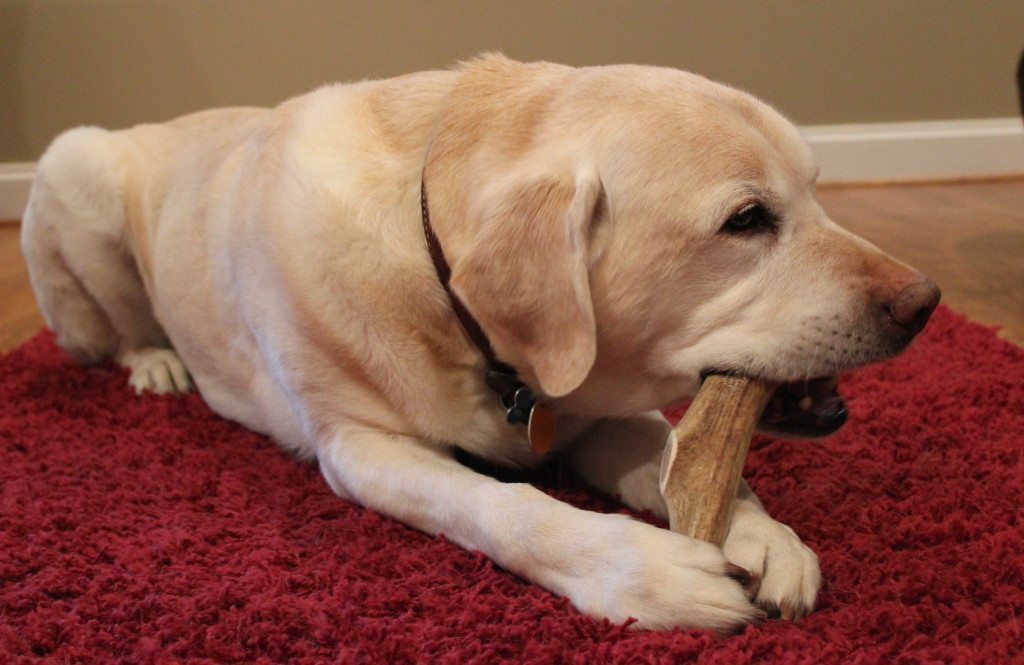

Whether you give your dog a raw hide, a raw bone, a deer antler or some other kind of chew toy, there is one safety measure that everyone should follow. Regardless of what you may have been told or read, there is not a bone or chew toy that is guaranteed safe for dogs. Not even raw bones.
Also Read <How Often Should I Brush My Dog’s Teeth?>
But that doesn’t mean you should stop giving your dog a bone. Just make sure you follow some safety guidelines.
Are Raw Dog Bones Safe? No Way!
Just the other day, we had a close call with a raw bone. I’ve given raw bones to my dogs several times. I usually get them from the grocery store – I’ll ask for soup marrow bones which I will then freeze. Then I give each of my dogs a raw bone outside so it makes for easier cleanup. I typically hang outside with my dogs while they enjoy the bones. However, this time I became distracted. The door bell rang and I went back inside to see who it was – this was my big mistake. One of my daughter’s friends had come over to play. Then my son asked for some help with his lego set. Before I realized it, 10 to 15 minutes had passed by. When I finally went to check on the dogs, I saw that one of the raw bones had been cracked in half. One-half was nowhere to be found which obviously led me to believe that my labrador had eaten it.
Sure enough, in less than 24 hours, my labrador started having runny diarrhea. I called my vet to consult with her on next steps. I was advised to monitor my dog closely and to look for additional symptoms like; blood in the stool, decreased appetite, vomiting, lethargy. All of which could possibly mean that there was a blockage due to the bone that my dog ate. Usually, that results in a costly yet life-saving surgery to remove the bone fragments.
Luckily for us, the diarrhea was the worst of it. By the next day, my dog’s bowel movements had returned to normal.
Dog Bone Safety Tips – Supervise Your Dog
So the best way to avoid going through a similar experience, you should monitor and supervise your dog closely as he/she enjoys their bone – and do this regardless of the type of bone. With raw hides, they get soft as the dog chews on them. Look out for large pieces chewed off that they could swallow. Also, monitor the size of the rawhide and take it away once it becomes a choking hazard. Raw Bones are much harder but they still have the potential to crack. Monitor for cracked pieces that your dog could try to swallow. Cooked marrow bones are hard too but they are more prone to splinter – look for any pieces of cracked and splintered bone.
Carmela Stamper, a veterinarian in the Center for Veterinary Medicine (CVM) at the Food and Drug Administration (FDA) was quoted on the FDA website and said, “We recommend supervising your dog with any chew toy or treat”.
Even with supervision, there are risks involved with bones and chew toys but by supervising your dog closely, you can hopefully avoid an incident.

